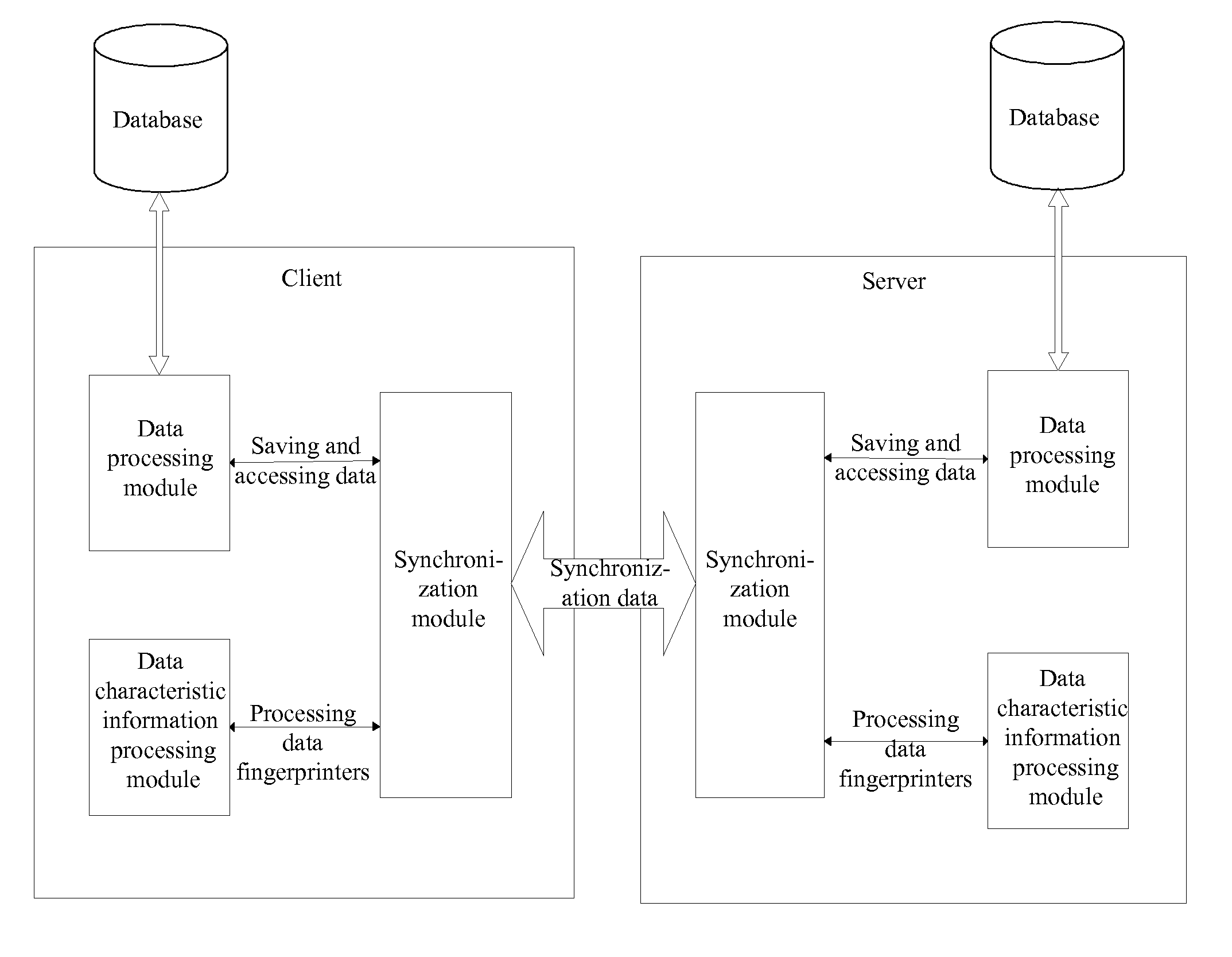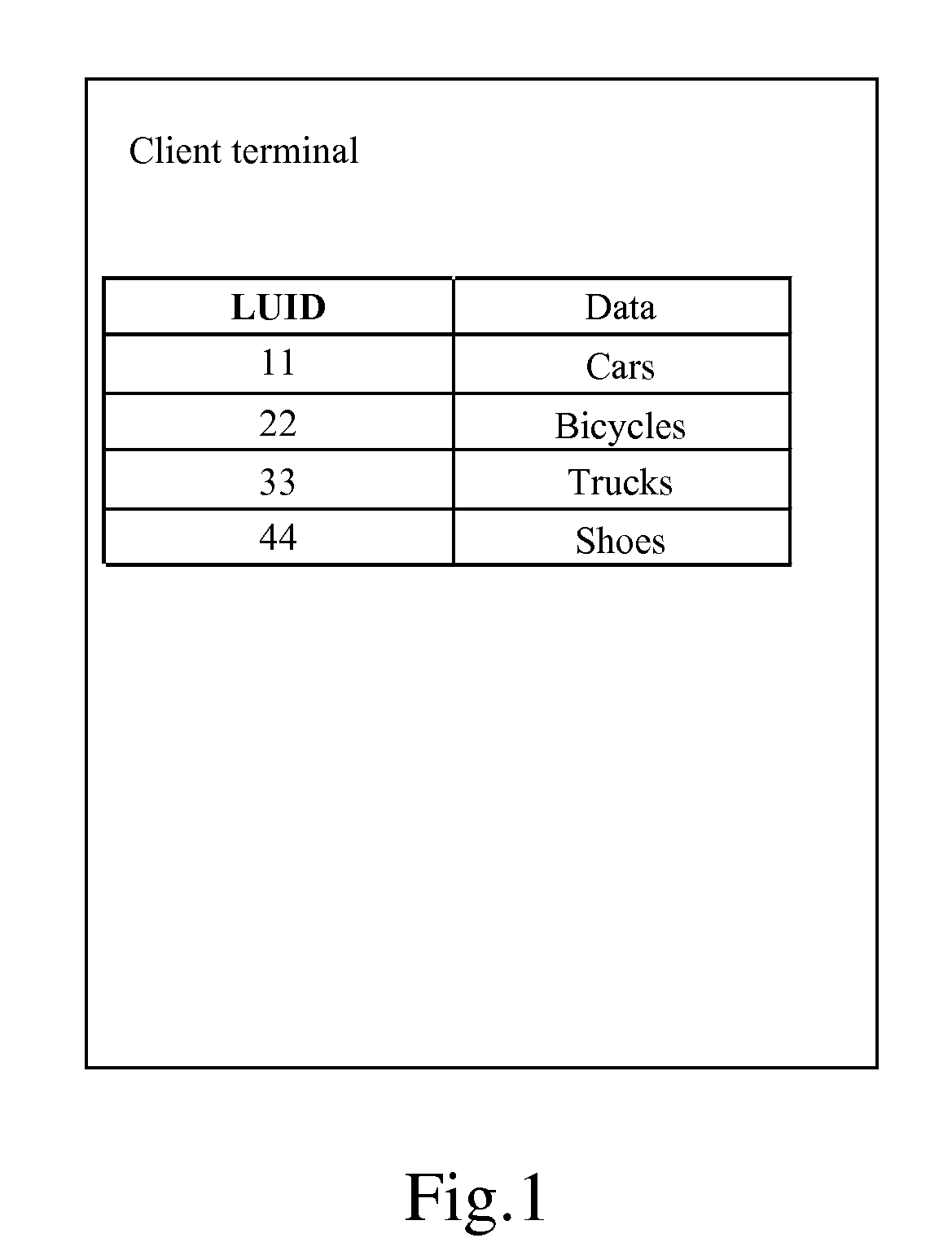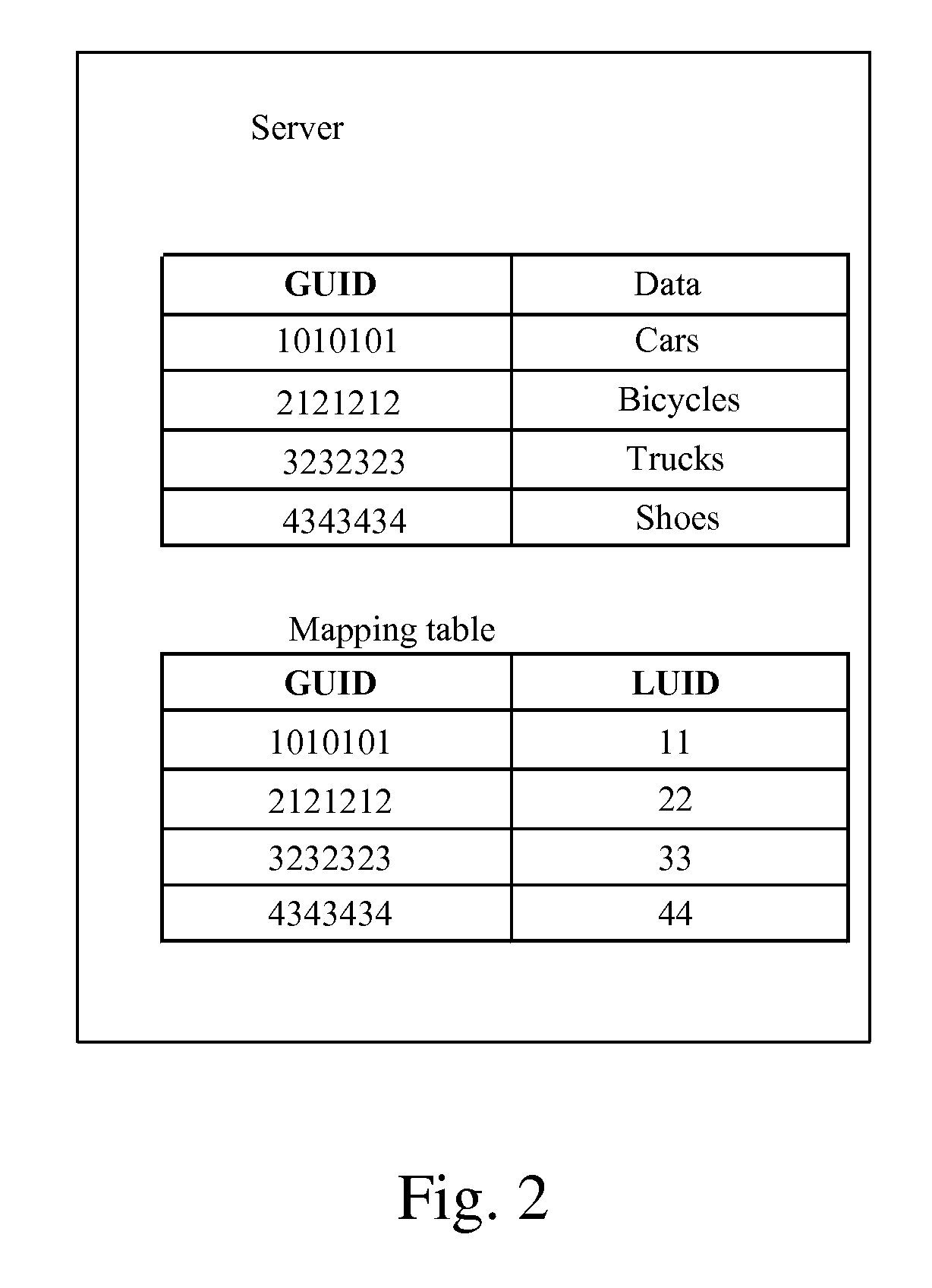Method and system for data synchronization, and apparatus thereof
a data synchronization and data technology, applied in the field of data processing technologies in networks, can solve the problems of inability to tell which data item has been synchronized and which data item still needs to be synchronized, and the guid mapping table in the server becomes useless, and achieves the effect of reducing the quantity of data, short data characteristic information, and improving data synchronization efficiency
- Summary
- Abstract
- Description
- Claims
- Application Information
AI Technical Summary
Benefits of technology
Problems solved by technology
Method used
Image
Examples
embodiment 1
[0226 is described as follows, which is an embodiment of the present disclosure in the first situation shown in Table 4.
[0227]At first, initial states of the data items in the client database and in the server database are shown in FIG. 8a.
[0228]After a period of time, the data items in client database and the server database are modified as shown in FIG. 8b.
[0229]Next, the Change Log of the data items in the client database is lost, as shown in FIG. 8c.
[0230]At last, the data fingerprints are compared.
[0231]Step A: The client detects that the Change Log of the data items in the client database is lost. In initial stage of the data synchronization, the client sends the server a request for initiating smart sync with a reason value indicating that Change Log is lost.
[0232]Step B: The server returns a smart sync confirmation message.
[0233]Step C: The client sends the server the LUID-fingerprints of the data items in the client database, the LUID-fingerprints include {}.
[0234]Step D...
embodiment 2
[0242 is described as follows, which is an embodiment of the present disclosure in the second situation shown in Table 4.
[0243]At first, all LUIDs of the data items in the client database are invalidated. And on the server, a mapping between the LUIDs and the GUIDs is invalidated too. In such situation, the client will assign new LUIDs to the data items in the client database. The objective of the smart sync in such situation is to re-establish the GUID-LUID mapping on the server in a fast and efficient way, and synchronize the data items in the client database with corresponding data items in the server database.
[0244]Next, as shown in FIG. 9a, the client assigns new LUIDs to the data items in the client database. The corresponding relations stored in the server database are invalidated, so matching data items can only be found based on the data fingerprints, and data items without matching data fingerprints are regarded as new items.
[0245]At last, the data fingerprints in the two ...
embodiment 3
[0253 is described as follows, which is an embodiment of the present disclosure in the first situation shown in Table 4.
[0254]At first, the initial states of the data items in the client database and in the server database are shown in FIG. 10a. Then the data items in client database and the server database are modified as shown in FIG. 10b.
[0255]Next, the Change Log of the data items in the client database is lost, as shown in FIG. 10c.
[0256]At last, the data fingerprints in the two databases are compared.
[0257]Step A: The client detects that the Change Log of the data items in the client database is lost. In the initial stage of the data synchronization, the client sends a request for initiating smart sync with a reason value indicating that Change Log is lost.
[0258]Step B: The server returns a smart sync confirmation message.
[0259]Step C: The client sends the server the LUID-fingerprints of the data items in the client database, the LUID-fingerprints are as follows: {}.
[0260]St...
PUM
 Login to View More
Login to View More Abstract
Description
Claims
Application Information
 Login to View More
Login to View More - R&D
- Intellectual Property
- Life Sciences
- Materials
- Tech Scout
- Unparalleled Data Quality
- Higher Quality Content
- 60% Fewer Hallucinations
Browse by: Latest US Patents, China's latest patents, Technical Efficacy Thesaurus, Application Domain, Technology Topic, Popular Technical Reports.
© 2025 PatSnap. All rights reserved.Legal|Privacy policy|Modern Slavery Act Transparency Statement|Sitemap|About US| Contact US: help@patsnap.com



